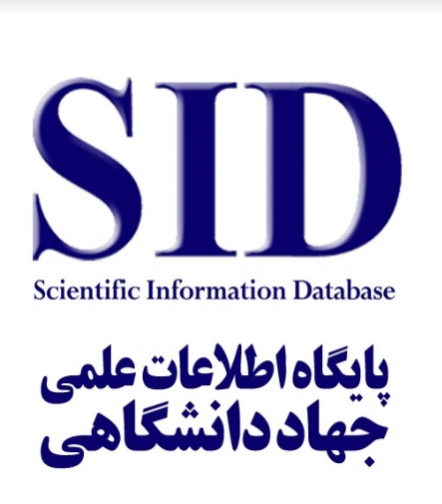Comparison between Foreign Direct Investment and Russian Sanctions on BRICS Exports and Imports
Keywords:
Foreign direct investment, sanctions, trade condition, generalized method of moments, BRICSAbstract
The objective of this research is to examine and compare the effects of foreign direct investment (FDI) and Russian sanctions on the exports and imports of the BRICS group. For this purpose, using quarterly data from 2010 to 2023, the impact of the selected variables on the total exports and imports of the BRICS countries was estimated through the generalized method of moments (GMM) approach. The results of the study indicated that the trade condition variable in the previous period, which includes the total exports and imports, has a positive and significant effect on the dependent variable in the current period. Furthermore, based on the model estimation, the effective exchange rate variable exerts a positive and significant impact on trade conditions. The investment variable has a negative and significant effect on the dependent variable. The net export variable, defined as the difference between exports and imports of BRICS countries, has a positive and significant impact on the trade condition variable. The sanction variable, which in this study refers to the comprehensive sanctions imposed against Russia, shows that during the period 2014–2020 the sanctions had a negative and significant effect, whereas in the period 2021–2023 this negative effect became insignificant. Considering the results of the study, it can be concluded that the sanction variable had a more negative impact on the trade conditions of BRICS member countries compared to foreign direct investment. However, during the period in which Russia managed to overcome the sanctions, the negative effect of sanctions became insignificant.
Downloads
References
Afesorgbor, S. K. (2019). The impact of economic sanctions on international trade: How do threatened sanctions compare with imposed sanctions? European Journal of Political Economy. https://doi.org/10.1016/j.ejpoleco.2018.06.002
Aizenman, J., & Noy, I. (2006). FDI and trade—Two-way linkages? The Quarterly Review of Economics and Finance, 46(3), 317–337. https://doi.org/10.1016/j.qref.2006.02.004
Bali, M. (2018). The impact of economic sanctions on Russia and its six greatest European trade partners. Finance & Business, 14(2), 45–67. https://doi.org/10.31085/1814-4802-2018-14-2-45-67
Dai, M., Felbermayr, G., Kirilakha, A., & Syropoulos, C. (2021). Timing the impact of sanctions on trade. In Research Handbook on Economic Sanctions (pp. 1–20). Edward Elgar Publishing. https://doi.org/10.4337/9781839102721.00031
Frank, J. (2018). The effects of economic sanctions on trade: New evidence from a panel PPML gravity approach. Discussion Paper, 17, 1–55.
Fontagné, L. (1999). Foreign direct investment and international trade: Complements or substitutes? Directorate for Science, Technology and Industry, 99(3), 2–31.
Haidar, J. I. (2016). Sanctions and export deflection: Evidence from Iran. Economic Policy, 23(22), 1–42. https://doi.org/10.1093/epolic/eiw001
Karimov, M. (2020). The impact of foreign direct investment on trade (export and import) in Turkey. European Journal of Interdisciplinary Studies, 6(1), 1–17. https://doi.org/10.26417/ejis.v6i1.p1-17
Kumar, V. (2010). Determinants of FDI in BRICS countries: A panel analysis. International Journal of Business Science and Applied Management, 5(3), 2–14.
Kumar, V., Murthy, N., & Sekhara, K. (2010). Determinants of FDI in BRICS countries: A panel analysis. Journal of Business Science and Applied Management, 5(3), 2–14.
Payaame Ahan News Agency. (2024, October 20). [News report, Code No. 71,216].
Jahan Sanat Newspaper. (2024, October 1). [News report, Code No. 488874].
Radulescu, I. G., Panait, M., & Voica, C. (2013). BRICS countries challenge to the world economy: New trends. Procedia Economics and Finance, 8(2), 605–613. https://doi.org/10.1016/S2212-5671(13)00283-9
Saji, T. G. (2019). Does economic integration really improve trade competitiveness? The case of BRICS. Economic Affairs, 64(3), 469–480. https://doi.org/10.30954/0424-2513.3.2019.26
Thanagopal, T. (2013). Analyzing BRIC competitiveness in the EU-14, Japan, US and Norway. Applied Economics Quarterly, 61(3), 229–260. https://doi.org/10.3790/aeq.61.3.229
Truman, E. M. (2006). Implications of structural changes in the global economy for its management. World Economic Forum. Retrieved from https://piie.com/publications/papers/truman0306.pdf
Yahyavi Dizaj, J., Mohammadzadeh, Y., Hekmati, S., & Yaghoubi Farid, H. (2018). The relationship between economic and social factors and social harms in selected countries: A generalized method of moments approach. Social Welfare Quarterly, 18(68), 168–199.
Zamani, N. (2013). Economic-political outlook of BRICS. Foreign Policy Quarterly, 7(1), 120–147.
Golkhondan, A., Khansari, M., & Golkhondan, D. (2015). Militarization and economic growth: Empirical evidence from MENA countries in a dynamic panel model. Quarterly Journal of Economic Growth and Development Research, 5(18), 31–50.
Mansouri, M., Torabi, M., & Heydarpour, M. (2022). Strategic analysis of the economic development of emerging BRICS economies: Future outlook. Global Politics Quarterly, 11(1), 107–127.
Downloads
Published
Submitted
Revised
Accepted
Issue
Section
License

This work is licensed under a Creative Commons Attribution-NonCommercial 4.0 International License.


